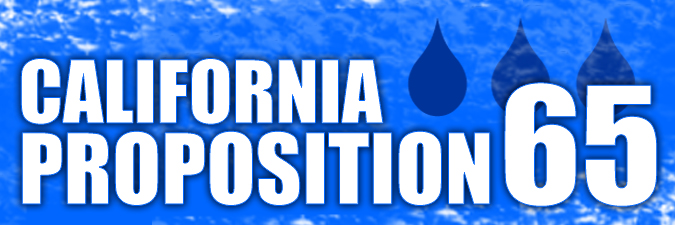California Publishes Q&A on New Prop 65 Warning Requirements

The California Office of Environmental Health Hazard Assessment (OEHHA) just posted a new Question and Answer document on how the Modified Proposition 65 Clear and Reasonable Warning regulations apply to businesses.
Proposition 65—also known as the Safe Drinking Water and Toxic Enforcement Act of 1986—prohibits knowingly exposing any individual to a listed chemical without first providing a “clear and reasonable warning” to such individual. On September 2, 2016, OEHHA announced a final rule concerning “clear and reasonable warnings” required under Proposition 65. The new regulations, which become effective on August 30, 2018, provide guidance on the manner and content for providing warnings, once businesses have determined that a warning is required. Warnings are required for exposures in excess of a safe harbor level for consumer product, environmental, or occupational exposures. Of note, “food” is included in the definition of “consumer products” in the new Proposition 65 Clear and Reasonable Warning requirements (see Title 27 California Code of Regulations, Article 6).
The Q&A document addresses:
- Consumer Product Exposure Warning Methods and Content;
- Environmental Exposure Warning Methods and Content;
- Occupational Exposure Warnings; and
- Responsibility to Provide Warnings
In addressing who is responsible for providing a warning, OEHHA’s regulations place primary responsibility for providing warnings on product manufacturers, producers, packagers, importers, suppliers, or distributors. The Q&A document explains that the retail seller is responsible for placement and maintenance of warning materials provided by the product manufacturer, producer, packager, importer, supplier, or distributor. A company that does not sell directly to retailers has two options for compliance: (1) label the product with the required warning, or (2) provide the warning notice that is passed along the supply chain and ultimately reaches the consumer.
One of the questions in the Q&A document concerns the obligations of suppliers of component parts or product ingredients that contain a listed chemical. Included in the answer is the following:
- “A company that manufactures component parts or ingredients that include listed chemicals…would only have responsibility for a consumer warning if it has knowledge that the end use of the component part or ingredient will expose a consumer to a listed chemical at a level that requires a warning.”
- “For example, if a manufacturer of a food ingredient knows that the ingredient is typically used at high enough concentrations to require a warning in certain types of prepared foods and could thereby result in an exposure under the Act, then the ingredient manufacturer should provide the warning notice to the product manufacturer. An ingredient manufacturer in such a situation may choose to work with the product manufacturer to evaluate whether the product should have a warning and may enter into a contract with product manufacturers to ensure that the warning is appropriately transmitted to the retailer and ultimately the consumer.”
Notably, the methods and content described in the Proposition 65 modified Clear and Reasonable Warning regulations are not legal requirements. Rather, they have been deemed by OEHHA as being clear and reasonable and, thus, if used in the manner described in the regulation will provide a safe harbor against an enforcement action. Businesses may choose to use other methods and content not prescribed by the regulation, but might have to defend the warning in legal proceedings, if challenged.